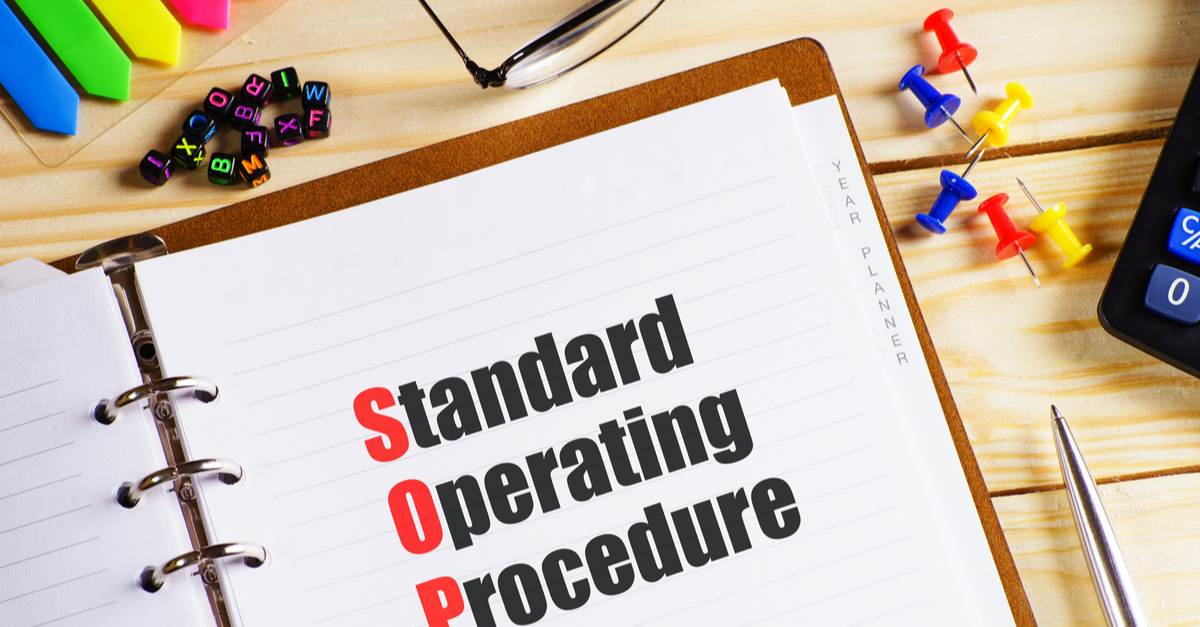What is worse than not writing SOPs (standard operating procedures) or WIs (work instructions) at all? Creating inappropriate and bloated procedures.
In this post, we’ll look at the benefits of really good guidelines and explore the best practices to follow when creating yours…
Documenting guidelines has numerous benefits (if done well)
There are many benefits to documenting guidelines for your staff, especially for the processes that tend to be done repeatedly and that can have a serious impact if done wrong:
- Documenting a good way of doing the work (and, depending on the context, letting each employee define her own routine with some variations, or calling for very precise compliance) improves efficiency and reduces mistakes.
- Calling out mistakes to avoid, and giving tips, is always useful.
- Training time is much shorter since there is a “manual” to follow.
- Managers don’t need to repeat the same things 10 times a day. When they see a departure from the standard, they can request that the team member(s) read a certain document, and can then observe if they are back in the standard.
- When issues are found, maybe it is due to a bad process (as planned and documented), or due to other causes. It might be an opportunity to challenge and upgrade the standard.
But despite these benefits, it’s amazing how often we see organizations and factories with a poor management system
As part of our factory audits at Sofeast, we have visited many organizations that have implemented a poor management system. And it is very obvious when looking at their operations, and then reading their SOPs and work instructions (WIs) which are not useful.
Watch this video to learn some of the best practices for writing SOPs and WIs that your team will really benefit from
I shot this video to guide our people to follow best practices and avoid common pitfalls when writing SOPs and WIs:
Since we are certified as ISO 9001 compliant at Sofeast, and we are working on ISO 9001 in our contract manufacturing subsidiary, we also need to plan for what third-party auditors like and don’t like to see.
Perhaps the guide to writing SOPs and other guidelines for your organization might be useful for you, too? Let me know if it is, or if you have any other questions about creating better SOPs and work instructions.
*****
Read these related articles that you may also find helpful:
- Basics about ISO 9001
- Benefits of ISO 9001 for manufacturing organizations
- 10 signs of a bad ISO 9001 implementation
- How a factory can go beyond ISO 9001
- Writing procedures that comply with ISO 9001
- Hiring a Consultant to Prepare a Factory Audit
Ultimate Guide To Sourcing From China And Developing Your Suppliers [eBook]
This FREE eBook starts from the beginning, discussing whether you need to hire a sourcing agent, and follows the sourcing process right through to developing a trusted supplier’s quality and productivity.
There are 15 chapters over 80+ pages to explore, providing exhaustive guidance on the entire sourcing and supplier development process from start to finish, including:
- Identifying suppliers,
- Negotiations,
- Quality inspections,
- Developing Chinese suppliers,
- Improving factory quality and productivity,
- and much more…


